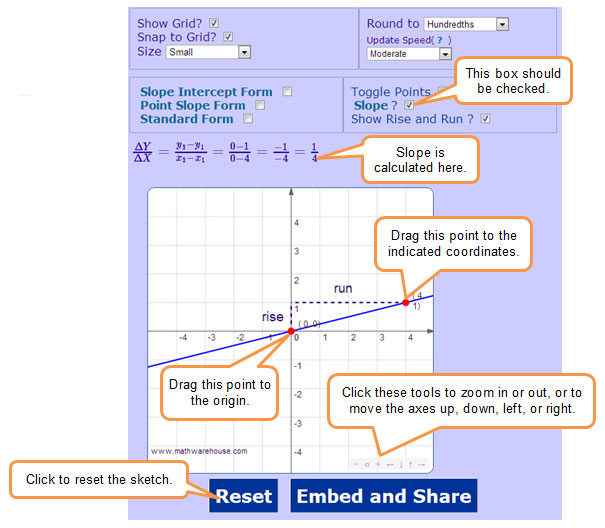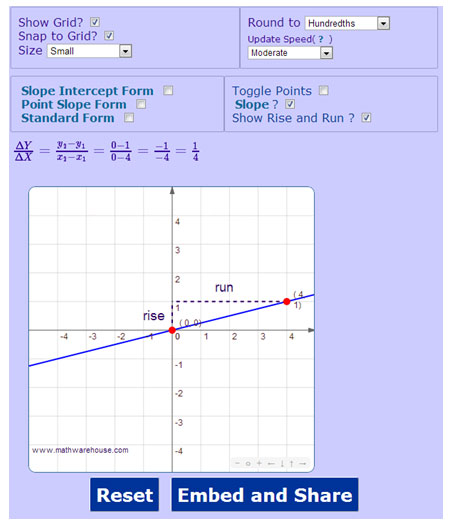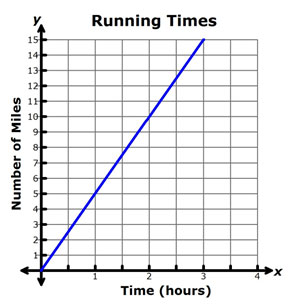In the previous section, the first video showed how the equation for direct variation, y = kx, relates to the equation of a line, y = mx + b, with the slope equal to k and a y-intercept of zero; therefore, one point on the line is (0,0).
For this section, you will need to use a graphing utility, such as a graphing calculator or the applet referenced below.
Click on the link to open the applet in a new window in your browser. Use the applet to answer the questions below.![]() Interactive Slope of a Line
Interactive Slope of a Line
Need help? Interactive popup. Assistance may be required. for additional directions.


In the applet, move one point to (0, 0), and move the second point to the given coordinates. Find the coordinate(s) that will answer the question.

Interactive popup. Assistance may be required.
Move the second point to (3, 2), and zoom out to find the y-coordinate of the point along the line that has the x-coordinate of 9. Interactive popup. Assistance may be required.
y = 6
Interactive popup. Assistance may be required.
y = 6
Interactive popup. Assistance may be required.
Move the second point to (2, 1), and zoom out to find the x-coordinate of the point along the line that has the y-coordinate of 5. Interactive popup. Assistance may be required.
x = 10
Interactive popup. Assistance may be required.
x = 10
Interactive popup. Assistance may be required.
Let x represent the cost in dollars and y represent the number of pencils. Move the second point to (2, 1), and zoom out to find the y-coordinate of the point along the line that has the x-coordinate of 10. Interactive popup. Assistance may be required.
Maria can purchase 5 pencils.
Interactive popup. Assistance may be required.
Maria can purchase 5 pencils.
For a direct variation graph, why does the line always go through the origin?
Interactive popup. Assistance may be required. If the line did not go through the origin, the relationship would not be proportional.
The constant of variation is the value of k in the equation y = kx. How does the constant of variation compare to the slope of the line y = kx?
Interactive popup. Assistance may be required. The constant of variation is equal to the slope of the line.
Miranda made a graph to show the number of miles she can run for certain times. The number of miles, y, varies directly as the number of hours, x, she runs. Use the graph to answer Questions 1-3.

Interactive popup. Assistance may be required.
What is the slope of the line? Interactive popup. Assistance may be required.
5 miles per hour
Interactive popup. Assistance may be required.
5 miles per hour

Interactive popup. Assistance may be required.
What is the y-coordinate of the point along the line with an x-coordinate of 2.5? Interactive popup. Assistance may be required.
12.5 miles
Interactive popup. Assistance may be required.
12.5 miles

Interactive popup. Assistance may be required.
What is the x-coordinate of the point along the line with a y-coordinate of 15? Interactive popup. Assistance may be required.
3 hours
Interactive popup. Assistance may be required.
3 hours
